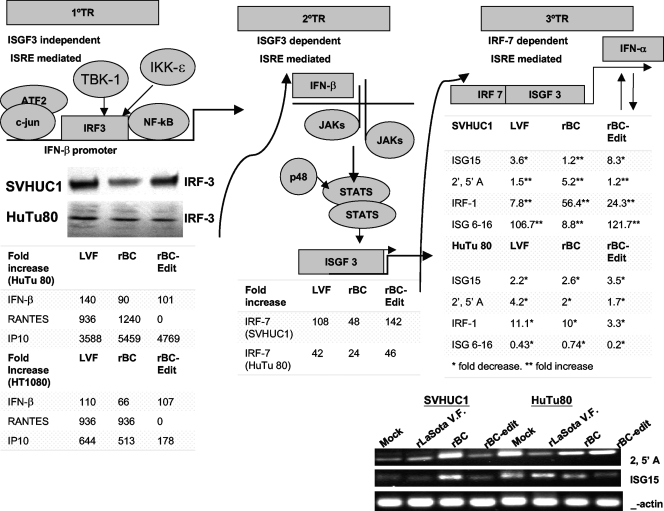FIG. 4.
IFN-α-responsive genes induced after rNDV infection of normal and tumor cells. The failure of secondary and tertiary transcriptional responses (2°TR and 3°TR, respectively) to NDV aids in tumor selectivity and oncolysis. The primary response to viral infection is mediated by IRF-3, leading to stimulation of the IFN-β promoter. IFN-β is then translated and secreted to stimulate, in an autocrine fashion, JAK/STAT signaling to form ISGF3 complexes in the nucleus, which mediate the induction of the secondary transcriptional responses. Without the consequent expression of IRF-7 in cells infected with rNDV, the tertiary transcriptional wave, which includes almost all IFN-α genes and its downstream antiviral mediators, could not take place. In the absence of IFN-α and IFN-α-responsive antiviral genes, virus replication is enabled in tumor cells. In normal human cells, the transcriptional events proceed unhampered, resulting in a robust antiviral state preventing virus replication. IFN-α-responsive antiviral genes were detected by RT-PCR of cell lysates infected with rNDV at 48 h postinfection. Fold increases of different antiviral mediators, such as ISG15, 2′,5′ A, IRF-1, and ISG 6-16 mRNAs, compared to levels in mock-infected cells are shown. Values represent average fold increases over levels in mock-infected cells from two independent experiments. RT-PCR products of 2′,5′ A and ISG15 analyzed in 2% agarose gels are shown, along with β-actin for comparison.

